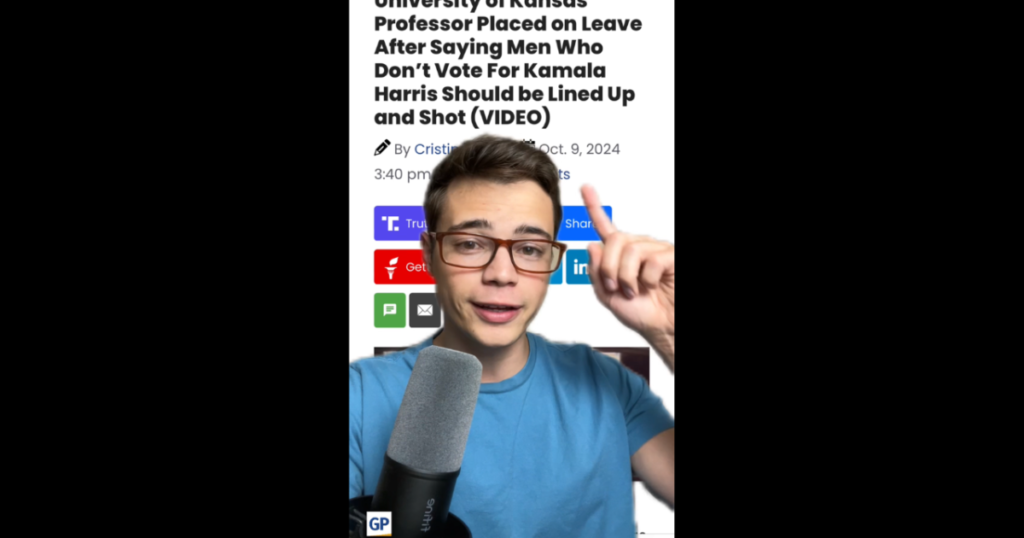The recent incident involving a University of Kansas professor has ignited a fervent debate regarding violence in liberal discourse and its implications for higher education. The professor made headlines when he suggested, during a class on sleep cycles, that men who refuse to vote for Kamala Harris simply because she is a woman should be “lined up and shot.” This outrageous comment, captured on video, provoked a strong backlash and raised questions about the rhetoric used in discussions surrounding gender and political representation. Many are left wondering whether such extreme sentiments are indicative of a broader trend within liberal circles and the implications for societal discourse surrounding gender and politics.
The professor’s inflammatory statement was framed as a reaction to what he perceives as systemic misogyny within political discourse. He expressed frustration with the notion that some men possess an inherent bias against female leadership, suggesting that this perspective undermines the capabilities of women. This reflects a sentiment commonly found in discussions around feminism and gender equality, where advocates argue for the necessity of female representation at all levels of government. However, the professor’s violent insinuation raises concerns about the normalization of aggressive rhetoric in progressive conversations, particularly in academic settings meant to foster open debate and intellectual growth.
In the evolving landscape of political correctness and liberal ideology, it becomes increasingly crucial to scrutinize the language used by educators and public figures. The response to the professor’s comments reveals a division within the educational community regarding the boundaries of free speech and the responsibility of educators to maintain a safe and constructive learning environment. Although the university promptly placed the professor on administrative leave, the incident highlights the potential consequences of blending ideological commitment with aggressive rhetoric, which can alienate students and foster an atmosphere of hostility rather than dialogue.
Critics of liberal ideology argue that such extreme expressions of frustration are emblematic of a deeper issue at play, wherein those who promote progressive ideals may resort to violence or aggressive language to convey their beliefs. This perception becomes more pronounced when educators, who serve as role models for future generations, employ such rhetoric. The incident not only exemplifies the dangers inherent in normalized aggression but also poses a significant challenge for institutions striving to strike a balance between advocating for change and promoting civil discourse.
Furthermore, the emergence of incidents like this one points to a growing polarization within political ideology. As discussions around gender, race, and identity become increasingly fraught, the risk of escalated rhetoric becomes more apparent. The professor’s comments can be seen as part of a larger pattern of intolerance that can stifle healthy debate, and the broader implications of these behaviors can hinder the very progress that advocates for liberal political change seek to achieve.
In conclusion, the disturbing remarks by the University of Kansas professor serve as a reminder of the current tensions in political discourse, particularly within liberal circles. The incident emphasizes the need for a careful examination of the language we use in advocating for social and political change and challenges the educational community to cultivate an environment that encourages respectful, open discussion rather than violent or aggressive rhetoric. With the influence of educators playing a crucial role in shaping societal values, it becomes imperative to question and redefine the standards of discourse that will ultimately guide the next generation towards a more constructive approach to addressing political differences.

